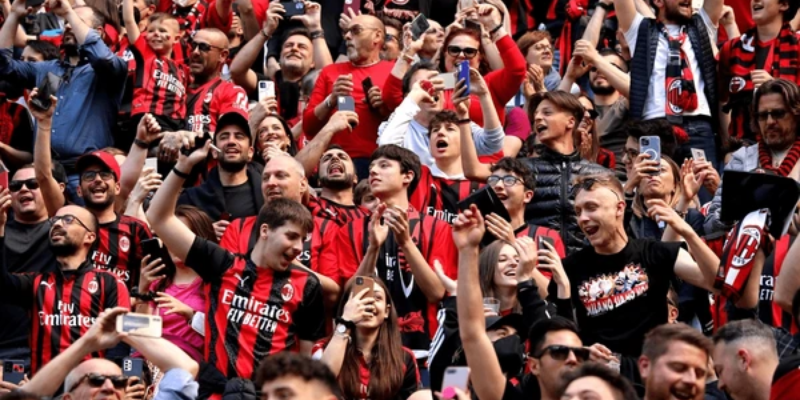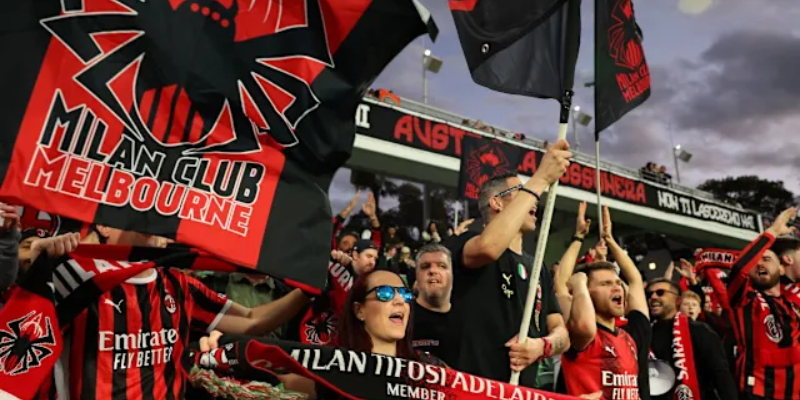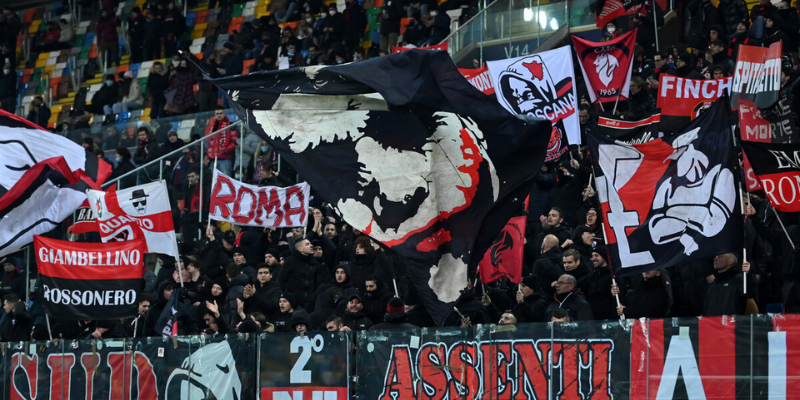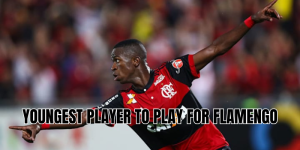The moment you step into San Siro or scroll through pictures of AC Milan supporters draped in banners, you sense a deep identity in red and black. But have you ever wondered why are AC Milan fans called Rossoneri Tifosi? In this article, SaiKick will guide you through the history, meaning, culture, and myths behind these two powerful labels. Whether you’re a longtime follower or just discovering the Rossoneri spirit, read on to feel the passion behind those names.
What Does “Rossoneri” Mean—and Why It Matters

From the club’s earliest days, the nickname Rossoneri (literally “red-and-blacks” in Italian) has been synonymous with AC Milan. The origin is simple but symbolic: Milan’s shirts are striped in red and black, colors chosen to reflect the club’s identity and purpose.
Legend has it that Herbert Kilpin, one of Milan’s founders, chose red to represent the “fiery ardour” of players and black to evoke fear or intimidation in rivals. Over time, Rossoneri became not just a nickname for the team but a badge of identity embraced by its supporters too.
Thus any loyal fan wearing red and black—or chanting in devotion—is a Rossonero by proud association.
The Meaning and Roots of “Tifosi”

To complete the phrase, we have tifosi. In Italian, tifoso (singular) and tifosi (plural) essentially means “fans,” but with a dee. The term likely stems from tifo (typhus), historically used to describe feverish intensity—a metaphor for fans whose passion burns hot.
Over time, tifosi evolved, calling someone a tifoso means more than supporter: it suggests emotional commitment, loyalty, and energetic presence in stadiums.
Putting the pieces together, Rossoneri Tifosi refers to fans of AC Milan who wear the red & black identity with fervent devotion—fans living and breathing the club’s colors.
Historical Context: Milan’s Fan Identity

To fully grasp why AC Milan fans embrace Rossoneri Tifosi, we need context—how the identity grew over time among Milan supporters.
Early fan culture and class roots
In Milan’s early footballing years, rivalry with Inter gave rise to social symbols for each side. Inter was often associated with the bourgeoisie, while Milan drew strength, Inter fans called Milan supporters casciavit (meaning “screwdrivers”), a nod to the working-class roots of many Rossoneri fans.
These labels, coming. Being a casciavit was more than a jibe—it was a marker of pride in authenticity and community.
Organized supporters and the “Tifoseria”
As football culture matured, fan groups formed: official fan clubs, ultras, local gatherings around the city of Milan. These groups merged the symbols (flags, chants, colours) with community identity. The term tifoseria refers to this organized mass of supporters.
Within this context, Rossoneri became not just “those who wear red and black” but a social network, a cultural movement, centered around San Siro and spreading across Milan’s districts and worldwide.
The Power of Identity: Rossoneri + Tifosi in Practice
It’s one thing to define the terms; it’s another to see how they live and breathe in modern fan culture.
Visual symbols and matchday ritual
- Attire & flags:, red-black is everywhere. On matchday, the sea of these colours is unmistakable.
- Chants and songs: Rossoneri tifosi organize chants that reference the club’s history, glories, and identity—embedding the nickname in each refrain.
- Curva Sud & ultras: The most passionate supporters congregate in the Curva Sud section. These ultras use choreographies, flares, banners to assert the Rossoneri identity.
Emotional and social bonds
Being a Rossonero tifoso isn’t just about watching matches—it’s a community. Fans share stories, travel to away games, join local Milan clubs across continents. The label creates connection: “We are Rossoneri, and this is how we live football.”
Common Myths and Misunderstandings
Whenever tradition and folklore mix, myths emerge. Let’s debunk a few around Rossoneri Tifosi.
- Myth: “Tifosi” is unique to AC Milan — False. Tifosi is used broadly across Italian sport to denote passionate fans. What makes Rossoneri Tifosi special is the blending with Rossoneri.
- Myth: It’s a modern marketing slogan — No. Rossoneri Tifosi long predate merchandising. These terms were born organically within fan culture and local Milanese tradition.
- Myth: Only organized ultras count as tifosi — Not at all. While ultras represent a hardcore subset, tifosi includes all devoted supporters, regardless of membership in formal groups.
Why the Term Still Matters Today
In an era of global fandom, social media followings, and commercial branding, Rossoneri Tifosi retains strength. Why?
- Identity anchoring: It grounds fans in the club’s colors, history, and local roots—something beyond a logo or a marketing campaign.
- Cultural continuity: Names carry stories. The label reminds each generation of fans where the club came from—and what it means to belong.
- Community-building: When someone calls themselves a Rossonero tifoso, others recognize the badge of loyalty. It’s a shared language of support.
Final Thoughts
In this article, SaiKick has walked you through exactly why are AC Milan fans called Rossoneri Tifosi: Rossoneri for the red and black identity; tifosi for the feverish passion of devoted fans. Together, they encapsulate both colour and soul, branding and feeling, symbol and community.
If you enjoyed this deep dive, explore more with us—read our profiles of historic Rossoneri tifosi in Milan, or check our guide to famous chants and ultras groups. And of course, next time you see a sea of red and black, you’ll know—you’re looking at proud Rossoneri Tifosi.






